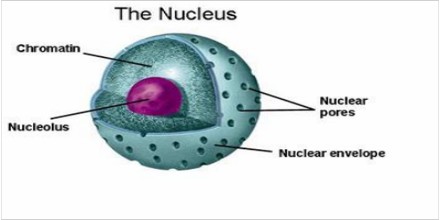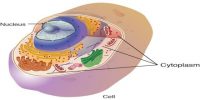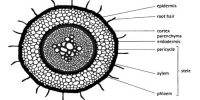The circular dense substance suspended on protoplasm is the nucleus. It controls all the physiological functions of the cell. In a newly formed cell, the nucleus is located in the centre of the cell. However, in a mature cell, this location may Change. The nucleus is generally circular in shape: it can be also semicircular or tubular in shag under some circumstances. Some cells have no nucleus. A nucleus usually consists of a) nuclear membrane, b) nucleoplasm, c) chromosome and d) nucleolus.
Nuclear membrane: This membrane surrounds the nucleus. This membrane separates cytoplasm from the nucleus and also controls the passage of material in and out of the nucleus.

Nucleoplasm: The transparent, liquid material inside the nucleus is nucleoplasm. It contains Chromosomes and nucleolus.
Nucleolus: It is the small, dense round body that remains attached to the chromatin fibre.
Chromatin fibre – The thread like coiled structure that floats in the nucleoplasm is chromatin fibre. It carries the characteristics of the organisms and passes it to the next generation. It regulates cellular growth or any other activities.












